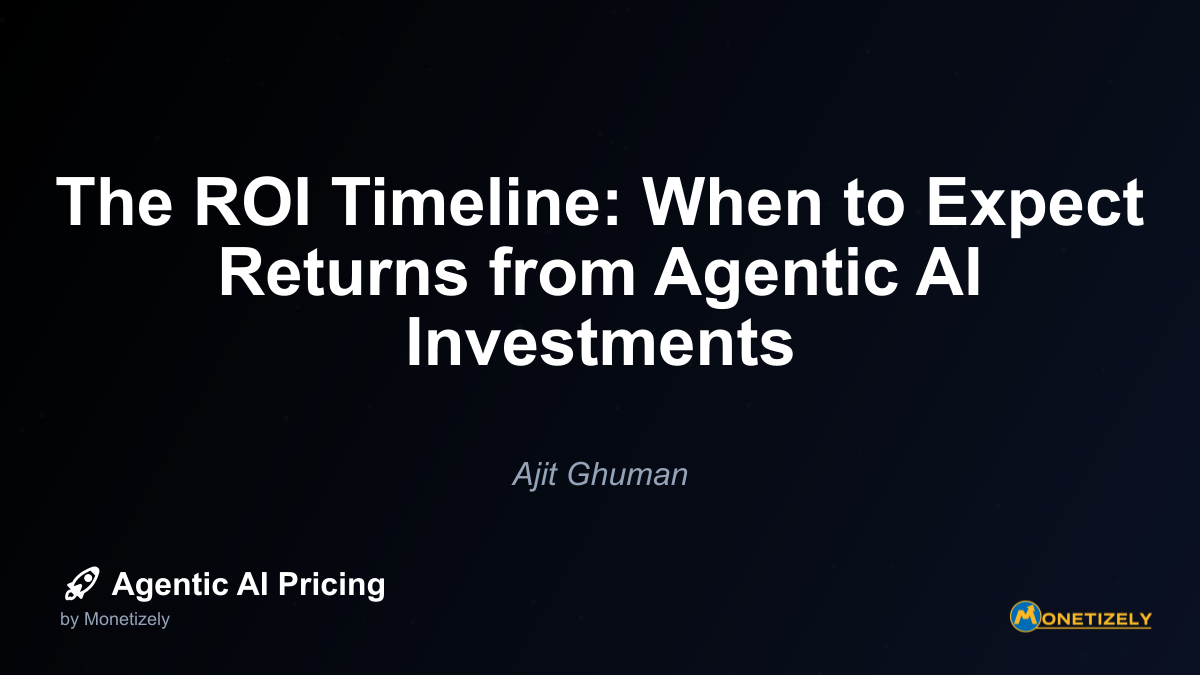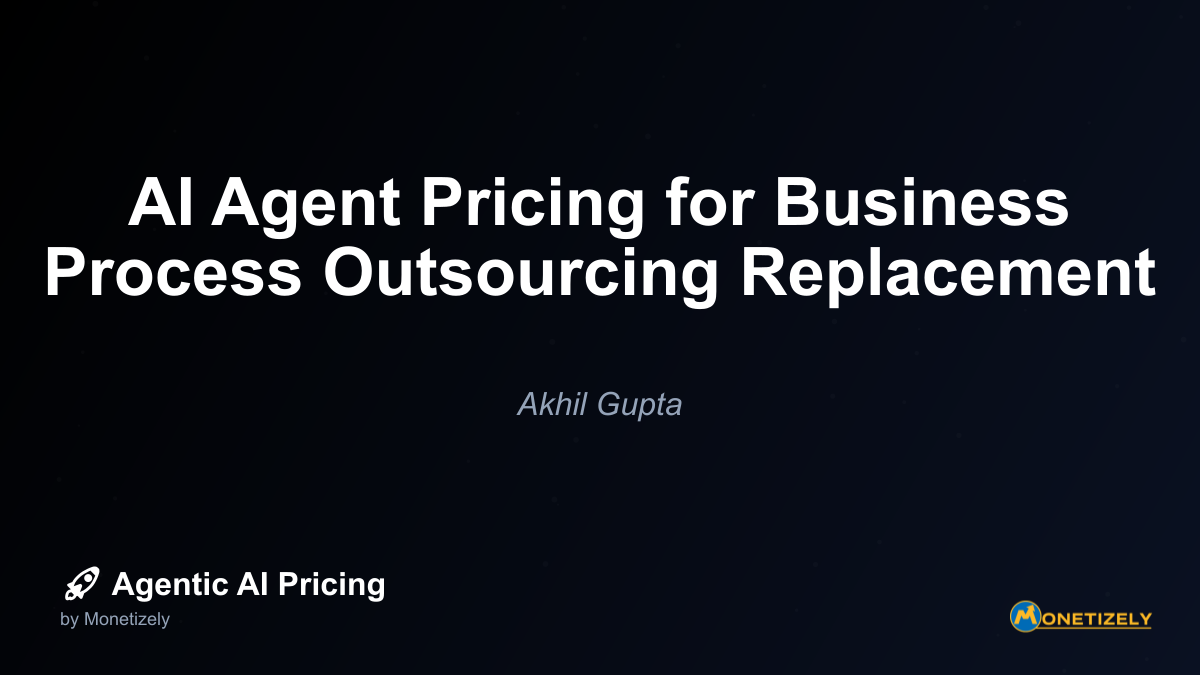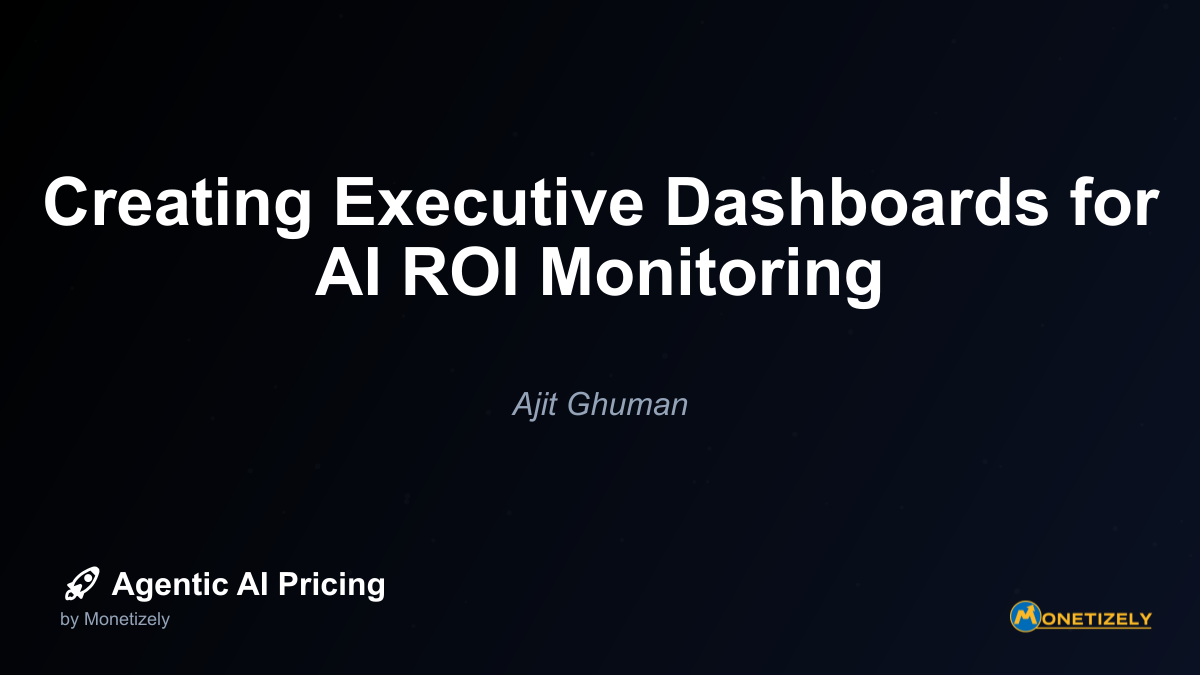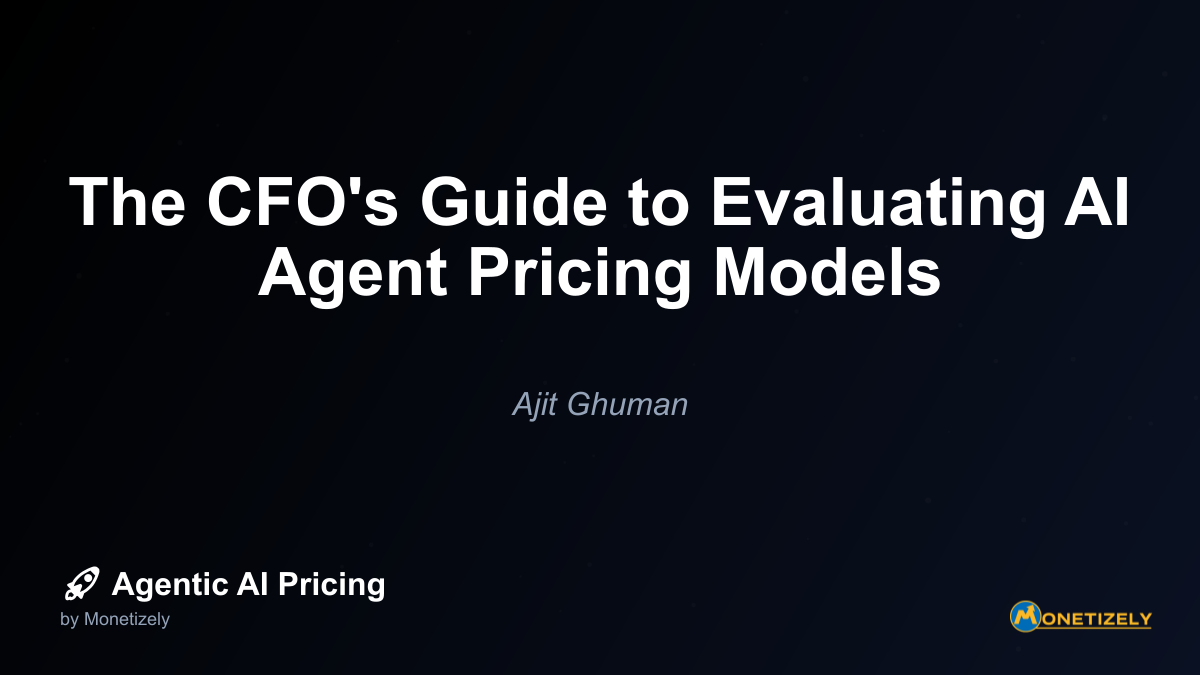· Ajit Ghuman · ROI and Value · 10 min read
ROI in Different Industries: Why Timelines Vary.
AI and SaaS Pricing Masterclass
Learn the art of strategic pricing directly from industry experts. Our comprehensive course provides frameworks and methodologies for optimizing your pricing strategy in the evolving AI landscape. Earn a professional certification that can be imported directly to your LinkedIn profile.
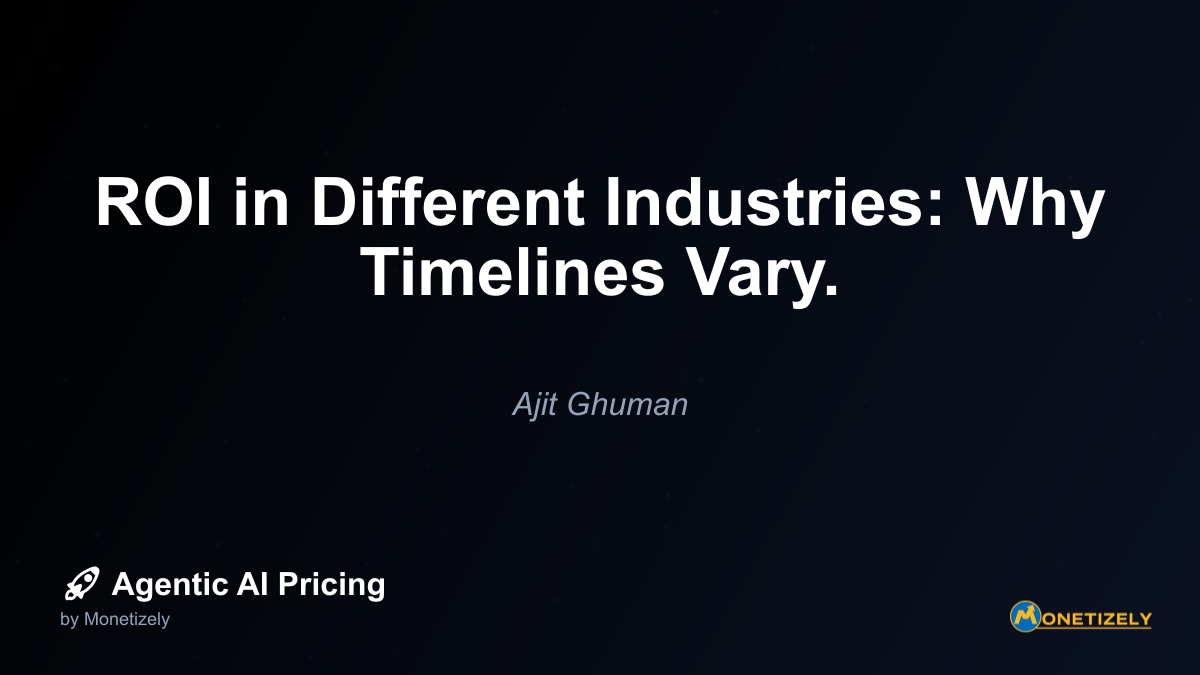
Time frames for realizing return on investment (ROI) from artificial intelligence implementations vary dramatically across industries. While some sectors see rapid payback periods measured in weeks or months, others must plan for extended timelines stretching into years. Understanding these industry-specific variations is critical for setting realistic expectations, securing appropriate funding, and maintaining stakeholder support throughout the AI journey.
The disparity in AI ROI timelines isn’t arbitrary—it stems from fundamental differences in regulatory environments, data accessibility, implementation complexity, and market dynamics unique to each sector. Organizations that fail to account for these industry-specific factors often find themselves disappointed by seemingly slow returns or unprepared for maintenance costs that erode initial gains.
This guide examines why AI ROI timelines differ so dramatically across industries and provides frameworks for developing realistic expectations based on your specific sector. By understanding these patterns, you’ll be better positioned to plan AI initiatives that deliver sustainable value aligned with your industry’s unique characteristics.
Why Industry Context Matters for AI ROI Timelines
The promise of artificial intelligence to transform business operations, enhance decision-making, and create new revenue streams applies across virtually every sector of the economy. However, the path to realizing these benefits—and the time required to achieve positive returns—varies significantly based on industry-specific factors.
Consider these contrasting examples:
- A retail recommendation engine might demonstrate measurable impact on conversion rates within weeks of deployment
- An AI-powered drug discovery platform could require years before its contributions translate to marketable products
- A manufacturing predictive maintenance system typically shows returns within months as it prevents costly equipment failures
- A healthcare diagnostic tool might face an extended approval and integration process lasting years before clinical adoption
These variations aren’t simply a matter of implementation quality or strategy—they reflect fundamental differences in how AI solutions interact with industry-specific constraints, opportunities, and value creation mechanisms.
Key Factors Driving Industry ROI Timeline Differences
1. Regulatory Environment and Compliance Requirements
Industries with stringent regulatory frameworks typically experience longer ROI timelines due to additional validation, documentation, and approval processes.
Healthcare: Perhaps the most heavily regulated sector, healthcare AI implementations face extensive requirements around patient data privacy (HIPAA), clinical validation, and in many cases, FDA approval. AI systems that influence clinical decisions may require randomized controlled trials and peer-reviewed validation studies—processes that can extend timelines by years.
Financial Services: Banking and financial services operate under complex regulatory frameworks including KYC (Know Your Customer), AML (Anti-Money Laundering), and various consumer protection regulations. AI systems must demonstrate compliance with these requirements, often requiring extensive testing and documentation.
Less Regulated Industries: By contrast, sectors like retail, entertainment, and certain B2B services face fewer regulatory hurdles, allowing faster implementation and ROI realization.
2. Data Accessibility and Quality
The time required to access, clean, and prepare sufficient data for AI systems varies dramatically by industry.
E-commerce and Digital Services: These industries typically begin with vast quantities of readily accessible, structured data about customer behaviors, transactions, and preferences. This data advantage allows for rapid training and deployment of effective AI systems.
Manufacturing: While modern factories generate substantial data, legacy equipment may lack appropriate sensors or data capture capabilities. Retrofitting for data collection can add months to implementation timelines before AI systems can be properly trained.
Healthcare: Patient data is often fragmented across systems, inconsistently formatted, and subject to strict privacy regulations. Creating usable datasets may require extensive integration work and compliance processes.
3. Implementation Complexity and Integration Requirements
The technical complexity of integrating AI into existing workflows and systems varies significantly across industries.
Marketing and Advertising: Digital marketing platforms are typically designed with API accessibility and data integration in mind, making AI implementation relatively straightforward.
Supply Chain and Logistics: These environments often involve multiple stakeholders, legacy systems, and complex physical processes that must be coordinated with digital intelligence, increasing implementation complexity.
Industrial Applications: Implementing AI in industrial settings frequently requires physical infrastructure changes, sensor installation, and integration with operational technology (OT) systems—all adding time before ROI can be realized.
4. Value Creation Mechanisms and Measurement Challenges
How quickly value becomes visible and measurable differs by industry.
Retail: AI-driven personalization typically shows clear impacts on metrics like conversion rates, average order value, and customer retention within short timeframes.
Insurance: AI for risk assessment may take years to fully validate as claims data accumulates over extended periods.
Pharmaceutical R&D: AI for drug discovery contributes to a process measured in years or decades, making direct ROI attribution challenging.
Industry-Specific ROI Timeline Expectations
E-commerce and Retail: 3-6 Months
E-commerce represents one of the fastest sectors for AI ROI realization, with typical payback periods ranging from three to six months for well-implemented solutions.
Factors Enabling Rapid ROI:
- Rich customer data already captured in digital formats
- Clear, measurable outcomes (conversion rates, cart size, retention)
- Ability to implement A/B testing for rapid validation
- Relatively straightforward integration with existing digital platforms
Common AI Applications:
- Product recommendation engines
- Dynamic pricing optimization
- Customer segmentation and personalization
- Inventory management and demand forecasting
A major online retailer implemented an AI-powered recommendation engine that achieved positive ROI within just 8 weeks by increasing average order value by 12% and improving conversion rates by 6%. The rapid feedback loop in e-commerce allows for continuous optimization, further accelerating returns.
Manufacturing: 6-18 Months
Manufacturing typically sees medium-term ROI timelines, with most implementations showing positive returns within 6-18 months.
Factors Affecting Timeline:
- Capital-intensive nature of equipment and processes
- Need for sensor installation and data collection infrastructure
- Integration complexity with operational technology systems
- Clearly measurable outcomes (downtime reduction, yield improvement)
Common AI Applications:
- Predictive maintenance
- Quality control and defect detection
- Process optimization
- Supply chain management
A leading automotive manufacturer implemented an AI-based predictive maintenance system that required 7 months to reach positive ROI. The initial period included sensor installation, data collection, model training, and integration with maintenance workflows. Once fully operational, the system reduced unplanned downtime by 27%, delivering substantial ongoing returns.
Financial Services: 12-24 Months
Financial services typically experience medium to longer ROI timelines ranging from 12-24 months for most AI implementations.
Factors Affecting Timeline:
- Regulatory compliance requirements
- Risk management considerations
- Legacy system integration challenges
- Data privacy and security concerns
Common AI Applications:
- Fraud detection and prevention
- Algorithmic trading
- Customer service automation
- Risk assessment and underwriting
A mid-sized bank implemented an AI-powered fraud detection system that required 14 months to achieve positive ROI. The extended timeline reflected the need for regulatory approval, extensive testing to minimize false positives, and integration with existing security systems. Once operational, the system reduced fraud losses by 31% while decreasing manual review requirements by 45%.
Healthcare: 18-36+ Months
Healthcare typically experiences some of the longest ROI timelines, often ranging from 18 months to 3+ years depending on the application.
Factors Affecting Timeline:
- Rigorous regulatory approval processes
- Clinical validation requirements
- Integration with complex healthcare IT ecosystems
- Patient safety considerations
- Privacy compliance (HIPAA, etc.)
Common AI Applications:
- Diagnostic assistance
- Medical image analysis
- Patient risk stratification
- Administrative workflow automation
A healthcare system implementing AI for radiology image analysis faced a 31-month journey to positive ROI. This timeline included regulatory approvals, clinical validation studies, workflow integration, and staff training. The extended validation phase was necessary to ensure diagnostic accuracy and patient safety before full deployment.
Telecommunications: 6-12 Months
Telecommunications companies typically achieve AI ROI within 6-12 months for most implementations.
Factors Affecting Timeline:
- Extensive existing data collection infrastructure
- Clearly defined operational metrics
- Network optimization opportunities with immediate impact
- Customer experience improvements with measurable outcomes
Common AI Applications:
- Network optimization and predictive maintenance
- Customer churn prediction
- Service personalization
- Capacity planning
A telecommunications provider implemented an AI system for network optimization and achieved positive ROI within 9 months. The system identified inefficiencies in resource allocation, predicted capacity needs, and automated adjustments to improve service quality while reducing operational costs.
Strategies for Accelerating ROI Across Industries
While industry-specific factors create natural variations in ROI timelines, several strategies can help organizations accelerate returns regardless of sector:
1. Phased Implementation Approach
Rather than attempting comprehensive transformation, focus on discrete use cases that can deliver measurable value quickly.
Example: A healthcare organization might begin with administrative AI applications (appointment scheduling, coding assistance) that face fewer regulatory hurdles before tackling clinical applications.
2. Leverage Pre-trained Models and Industry Solutions
Using pre-trained models or industry-specific solutions can significantly reduce the data collection and training phases.
Example: A manufacturer might adopt a pre-trained visual inspection model that requires only modest customization rather than building a solution from scratch.
3. Focus on Data Readiness
Proactively addressing data quality, accessibility, and governance issues can prevent delays during implementation.
Example: A financial services firm might establish a data preparation initiative in parallel with AI vendor selection to ensure necessary datasets are ready when implementation begins.
4. Establish Clear, Incremental Success Metrics
Define both short-term and long-term metrics to demonstrate progress even before full ROI is achieved.
Example: A retail implementation might track early indicators like recommendation click-through rates before expecting to see impacts on overall revenue.
Measuring ROI Across Different Industry Contexts
The approach to measuring AI ROI must be tailored to industry-specific value creation mechanisms and typical investment horizons.
Direct Revenue Impact (Retail, E-commerce, Advertising)
Industries with short sales cycles can often directly attribute revenue changes to AI implementations through:
- Conversion rate improvements
- Average order value increases
- Customer retention metrics
- A/B test comparisons
Cost Reduction (Manufacturing, Logistics, Operations)
Industries with significant operational costs typically measure ROI through:
- Downtime reduction
- Labor efficiency improvements
- Material waste reduction
- Energy consumption optimization
Risk Mitigation (Insurance, Financial Services, Cybersecurity)
Industries where risk management is central often measure ROI through:
- Fraud prevention savings
- Reduced default rates
- Improved underwriting accuracy
- Regulatory compliance efficiency
Long-term Value Creation (Healthcare, Pharmaceuticals, R&D)
Industries with extended value creation timelines need to establish:
- Milestone-based progress metrics
- Proxy indicators of future value
- Comparative acceleration metrics (time saved vs. traditional methods)
- Quality improvement measurements
Industry-Specific ROI Calculation Examples
Retail Recommendation Engine
Investment:
- AI platform licensing: $120,000/year
- Implementation services: $85,000
- Ongoing maintenance: $40,000/year
Returns:
- 8% increase in average order value
- 5% increase in conversion rate
- 3% increase in repeat purchase rate
With $50 million in annual online sales, these improvements generated $4.8 million in incremental revenue. At a 30% gross margin, this created $1.44 million in additional profit, yielding positive ROI within 4 months.
Manufacturing Predictive Maintenance
Investment:
- AI platform: $250,000
- Sensor installation: $180,000
- System integration: $120,000
- Annual maintenance: $75,000
Returns:
- 32% reduction in unplanned downtime
- 18% reduction in maintenance costs
- 7% increase in equipment lifespan
For a facility experiencing $2.1 million in annual downtime costs and $1.4 million in maintenance expenses, these improvements saved $672,000 in downtime and $252,000 in maintenance annually. ROI was achieved after 14 months.
Healthcare Administrative AI
Investment:
- AI solution license: $350,000
- Implementation and integration: $420,000
- Training and change management: $150,000
- Annual support: $120,000
Returns:
- 24% reduction in administrative staff time
- 18% improvement in coding accuracy
- 11% reduction in claim denials
For a healthcare system processing 400,000 claims annually with a 12% denial rate and $300 average resubmission cost, the reduction in denials alone saved $1.58 million annually. Combined with administrative efficiency gains, positive ROI was achieved after 22 months.
Conclusion: Setting Realistic Industry-Specific Expectations
The dramatic variation in AI ROI timelines across industries reflects fundamental differences in operational contexts, regulatory environments, and value creation mechanisms. Understanding these patterns is essential for setting realistic expectations and planning effective AI implementations.
Key takeaways for executives and decision-makers include:
Benchmark within your industry: Compare potential AI investments against typical ROI timelines for your specific sector rather than general AI case studies.
Plan for your timeline reality: Structure funding, stakeholder communications, and success metrics around realistic industry-specific timelines.
Consider the full ROI equation: Look beyond implementation costs to include regulatory compliance, change management, and ongoing optimization in your ROI calculations.
Balance quick wins with strategic value: In longer-timeline industries, identify opportunities for incremental value creation while working toward larger transformational goals.
Prepare for industry convergence: As industries increasingly overlap (e.g., retail and healthcare, manufacturing and services), consider how ROI patterns might evolve in your sector.
By approaching AI investments with a clear understanding of industry-specific ROI patterns, organizations can set appropriate expectations, allocate resources effectively, and maximize the long-term value of their artificial intelligence initiatives.
Co-Founder & CEO
Ajit is the author of Price To Scale, a top book on SaaS Pricing and is the Founder of Monetizely. Ajit has led and worked in pricing and product marketing at firms like Twilio, Narvar and Medallia. His work has been featured in Forbes and VentureBeat. Ajit regularly consults with software companies from Seed stage to post-IPO on pricing strategy. Ajit is also a highly-rated co-instructor for 'The Art of SaaS Pricing and Monetization' on Maven.
Pricing Strategy Audit
Let our experts analyze your current pricing strategy and identify opportunities for improvement. Our data-driven assessment will help you unlock untapped revenue potential and optimize your AI pricing approach.

